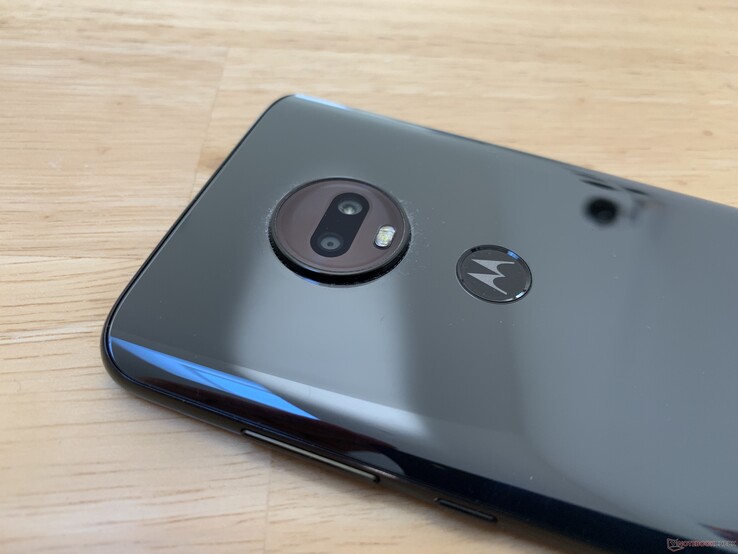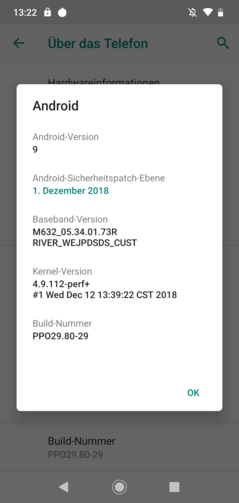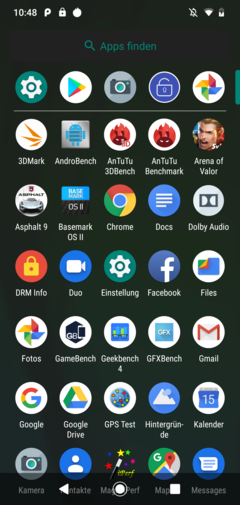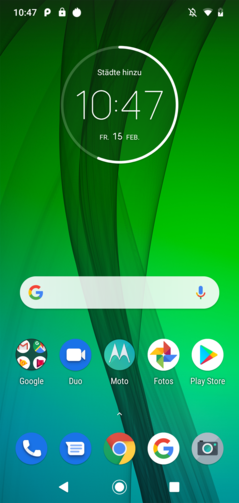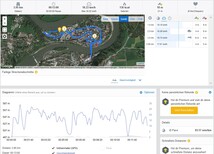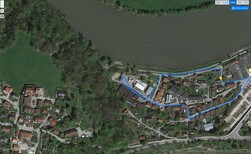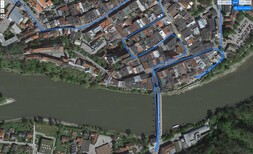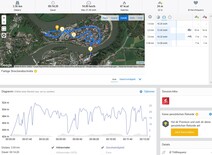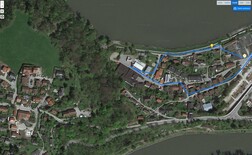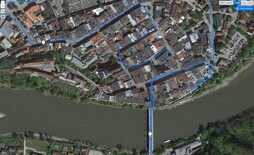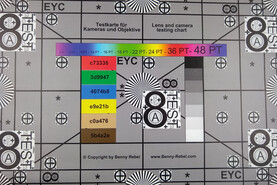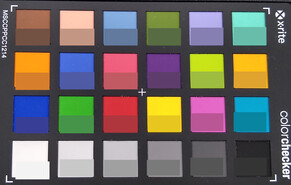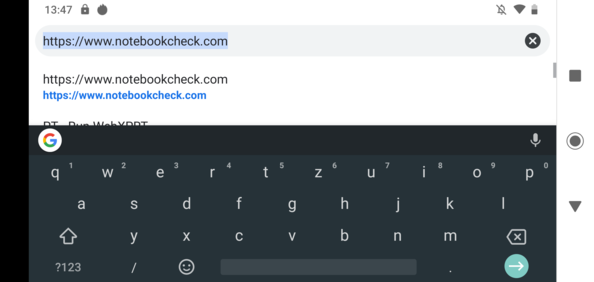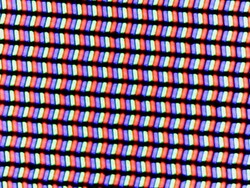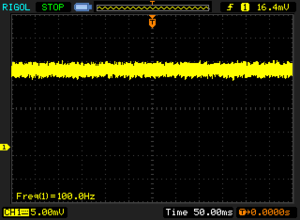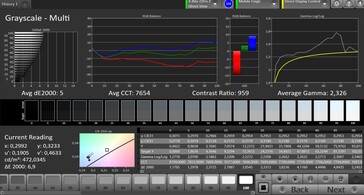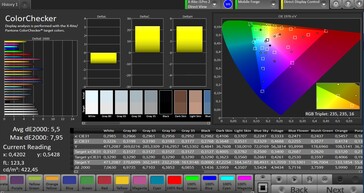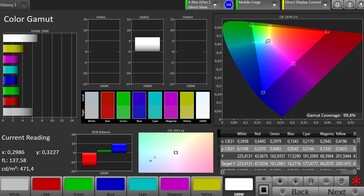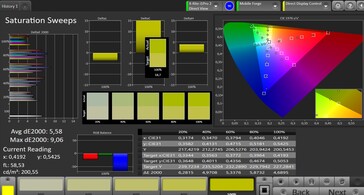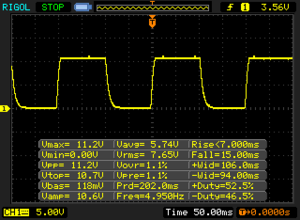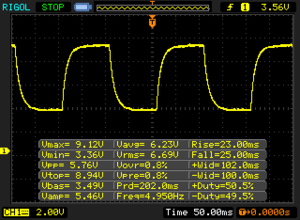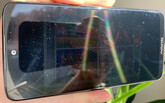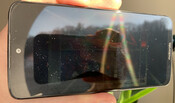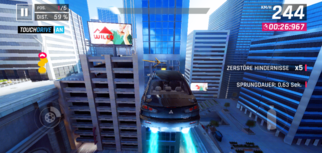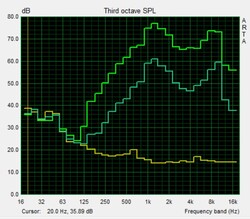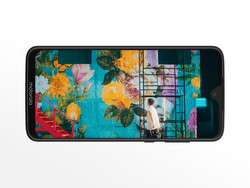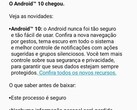Motorola Moto G7 Smartphone Review
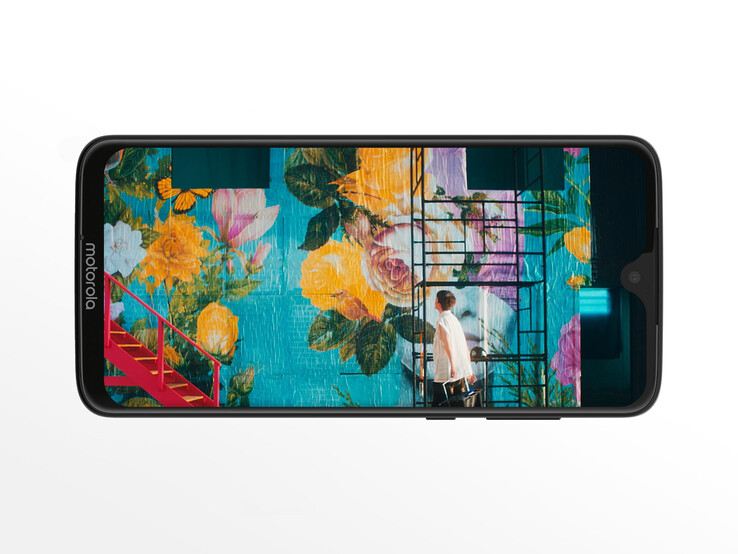
Motorola has always cared about the good reputation of its mid-range smartphones and even vowed "Premium for Everyone" with its last generation, which did not even really seem too overblown due to its attractive design and decent display. The Moto G7 is advertised with the slogan that it would make the impossible possible, with its high-powered zoom for the main camera, for example.
This year, Motorola has expanded on the Moto-G family even further, and in addition to the Moto G7 we are testing here, there are also the Moto G7 Plus, the Moto G7 Power with an extra-large battery, and the smaller Moto G7 Play. The Moto G7 shares its Snapdragon 632 SoC with the G7 Power and the G7 Play.
In addition to the Moto G6 predecessor, we also use comparison devices of the same price range as the Moto G7 or those that arrived there at this point: the Xiaomi Mi 8 Lite, the Honor 10 Lite, and the Nokia 7.1.
Addendum: 04.03.2019 Camera rating corrected.
Case – Glass everywhere
Motorola has adapted the case of the Moto G7 to the current trends. In order to make room for a larger display in front, the fingerprint sensor has moved to the back. At the same time, the top edge has shrunk to a small water-drop notch that is surrounded by more of the display as well. Compared to the Moto G6, the smartphone has become more modern, but the design of the back has not changed. There is still glass that extends slightly over the edges and a round camera module that is typical for Motorola's design language.
The color variants are black and white. While overall the case offers a high-quality impression for such an affordable device, it still cannot keep up with the high-end devices. This is also confirmed by the only mediocre stability of the case that can be warped, and pressure on the front will also quickly reach the display.
The Moto G7 is a few grams heavier than similar devices and feels comfortable to hold, thanks to its rounded corners.
Equipment – A lot of storage in the Moto G7
With 4 GB of RAM and 64 GB of storage, our test unit is well-equipped and also represents a significant upgrade compared to the predecessor. Fortunately, Motorola offers a separate slot for microSD cards in the dual-SIM model, so that you can expand the storage and still use two SIM cards. The developer options allow you to enable moving apps to the microSD, which also means that this option is well-hidden from regular users. The microSD card cannot be formatted as internal storage.
Software – Pure Android and HD streaming
Android 9 is installed on the smartphone, and the security patches are on the level of Dec. 1, 2018, so to ensure security there should be another update soon. Traditionally, Motorola offers a fairly pure Android, and additional options and extensions are only offered via the Moto app.
The app has also received a new, more elegant design, but the options are still similar. You can activate or deactivate various gestures for navigation, activate the preview display, and let Moto's speech output read you information updates.
Fortunately, Motorola has also received a DRM Widevine certification for the device, so that you can watch Netflix and other streaming content in high resolution on the smartphone.
Communication and GPS – WLAN is rather slow
In terms of WLAN and LTE, you should not expect too many updates compared to the Moto G6. There is still WLAN according to the 802.11a/b/g/n standards, and the speed is almost identical in our standardized WLAN test with the Linksys EA8500 reference router. This also means that the WLAN is slow compared to the Xiaomi Mi 8 Lite or the Nokia 7.1.
The LTE modem still only offers LTE Cat. 4, but at least there are more LTE bands now, so that even in far-away countries, you often can still find an LTE network.
| Networking | |
| iperf3 transmit AX12 | |
| Xiaomi Mi 8 Lite | |
| Nokia 7.1 | |
| Motorola Moto G6 | |
| Motorola Moto G7 | |
| Honor 10 Lite | |
| iperf3 receive AX12 | |
| Xiaomi Mi 8 Lite | |
| Nokia 7.1 | |
| Motorola Moto G6 | |
| Motorola Moto G7 | |
| Honor 10 Lite | |
The Moto G7 is unable to locate us indoors, even close to the window. It also takes its time outdoors until a sufficient number of satellites is found, but then the accuracy is quite good at up to three meters. The locating in Google Maps succeeds quickly and reliably and the right viewing direction is also reliably shown.
In our practical bike test, the Moto smartphone does fairly well against the professional navigation device from Garmin. Although it completely ignores the traffic circle for example, it does not get lost even in the tangle of small alleyways in the old city. It only cuts off a curve from time to time and places us on the bridge even more accurately than the professional navigation device. So anyone who does not need absolute precision in navigation will be satisfied with the Moto G7.
Telephone Functions and Voice Quality - The microphone gives some trouble
The standard Android phone app is also used in the Motorola Moto G7. Lately this also offers a dark mode, but otherwise it works as we have been used to for the last several years, except for the tabs for recent calls and contacts now being placed at the bottom of the display.
The voice quality is mixed with the Motorola smartphone and did not really convince us. Although the earpiece can be very loud if you want and you can also use it for calling in noisy surroundings, at the highest volume, the voices become distorted and are accompanied by other noises. There is also some clearly audible static noise. However at medium volume levels, which is probably what you would normally use for making phone calls, these noises are less pronounced. The microphone transmits our voice quite clearly, regardless of whether we speak quietly or use a loud voice. In speaker mode, the speaker, which can also be very loud if you need it, is very helpful, but on the other hand, the microphone almost fails completely unless we use a very loud voice.
Cameras – High-quality cameras in the Moto G7
On paper, the differences of the cameras do not look that big. There continues to be a dual-camera system with 12 and 5 megapixels on the back and in the front there is an 8-megapixel lens. What is new is that the main camera can now record videos at 4K.
At first glance, the images of the main camera look good in terms of their colors, and the dynamic is also decent. However, compared to absolute high-end cameras, we notice the significantly lower sharpness of the details and the lower brightness in darker areas. In the outdoor picture, the sky also shows much less detail. In weak light, the Motorola camera produces a very decent result with extra large pixels. Even though the iPhone XS Max can brighten things even more and the dynamic range is also better here, the Moto G7 offers a good camera quality for a mid-range device.
Videos with the main camera offer a simple time lapse and slow motion mode. Full HD videos can now even be recorded at 60 FPS, but 4K videos can only be recorded at 30 FPS. We like the quality of the videos: Even details are reproduced well, the exposure responds promptly to changing light conditions, and the sound is recorded cleanly.
The front camera also takes good pictures, and we like the high dynamic range and the detail sharpness here.
The main camera also needs to prove itself in the lab under controlled light conditions. Unfortunately, the test chart we photographed is reproduced with significantly more blurriness towards the edges, and text in front of colored background appears slightly blurry in parts. However, overall the quality of the image is also at a good level. To a large extent, colors are reproduced too bright, and the color areas are partly splotchy.
Accessories and Warranty – Fast charging for the Moto G7
In addition to the quick charger with a maximum of 18 watts and the USB-C cable, the box also includes a silicon case cover for the smartphone. Headphones are not included. There currently are no specific accessories for the Moto G7 on Motorola's website.
Motorola offers a 24-month warranty for the smartphone, but in some countries it is only 12 months. Please see our Guarantees, Return policies and Warranties article for country-specific information.
Input Devices and Operation – Moto phone with a good touchscreen
The touchscreen is easy to operate while still being precise. However, we do not like the experience of tapping on the touchscreen, since the glass has some minimal give and makes a hollow sound, which does not leave a high-quality impression.
Google's GBoard is used as the keyboard app, allowing you to type quickly and accurately. Other keyboards can also be installed without any problems.
On the right side of the case are the hardware buttons for standby mode and volume control. They are easy to reach and also respond accurately.
While the fingerprint sensor on the back works reliably, it takes a moment before the display contents actually appear.
Display – There still is a water-drop notch
The top of the 6.2-inch display is confined by a small water-drop notch that contains the front camera. The notification symbols and the time are displayed to the left and right of the notch. Since the screen has a 19:9 format, most videos are displayed in 16:9 with black bars on both sides.
At 453 cd/m² on average, the display brightness is at an average level. The display of the Moto G6 was slightly brighter. The brightness distribution is still fairly even.
| |||||||||||||||||||||||||
Brightness Distribution: 94 %
Center on Battery: 471 cd/m²
Contrast: 942:1 (Black: 0.5 cd/m²)
ΔE ColorChecker Calman: 5.5 | ∀{0.5-29.43 Ø4.79}
ΔE Greyscale Calman: 5 | ∀{0.09-98 Ø5}
99.6% sRGB (Calman 2D)
Gamma: 2.326
CCT: 7654 K
| Motorola Moto G7 IPS, 2270x1080, 6.2" | Xiaomi Mi 8 Lite IPS, 2280x1080, 6.3" | Motorola Moto G6 IPS, 2160x1080, 5.7" | Nokia 7.1 IPS, 2280x1080, 5.8" | Honor 10 Lite IPS, 2340x1080, 6.2" | |
|---|---|---|---|---|---|
| Screen | 15% | 11% | -11% | 16% | |
| Brightness middle (cd/m²) | 471 | 421 -11% | 488 4% | 577 23% | 467 -1% |
| Brightness (cd/m²) | 453 | 389 -14% | 478 6% | 550 21% | 446 -2% |
| Brightness Distribution (%) | 94 | 85 -10% | 95 1% | 91 -3% | 89 -5% |
| Black Level * (cd/m²) | 0.5 | 0.33 34% | 0.42 16% | 0.36 28% | 0.58 -16% |
| Contrast (:1) | 942 | 1276 35% | 1162 23% | 1603 70% | 805 -15% |
| Colorchecker dE 2000 * | 5.5 | 3.4 38% | 3.9 29% | 7.4 -35% | 1.5 73% |
| Colorchecker dE 2000 max. * | 7.95 | 5.9 26% | 6.8 14% | 15 -89% | 4.5 43% |
| Greyscale dE 2000 * | 5 | 3.9 22% | 5.3 -6% | 10.2 -104% | 2.4 52% |
| Gamma | 2.326 95% | 2.26 97% | 2.41 91% | 2.29 96% | 2.22 99% |
| CCT | 7654 85% | 7330 89% | 7146 91% | 9657 67% | 6387 102% |
* ... smaller is better
Screen Flickering / PWM (Pulse-Width Modulation)
| Screen flickering / PWM detected | 100 Hz | ≤ 10 % brightness setting | |
The display backlight flickers at 100 Hz (worst case, e.g., utilizing PWM) Flickering detected at a brightness setting of 10 % and below. There should be no flickering or PWM above this brightness setting. The frequency of 100 Hz is very low, so the flickering may cause eyestrain and headaches after extended use. In comparison: 53 % of all tested devices do not use PWM to dim the display. If PWM was detected, an average of 8156 (minimum: 5 - maximum: 343500) Hz was measured. | |||
At a very low brightness, the display flickers strongly due to pulse width modulation, which can lead to problems for sensitive users when they look at the screen for a long time.
The black value of the screen is also average at 0.5 cd/m², and the contrast ratio of 942:1 is fairly good. In our tests with the spectral photometer and the CalMAN software, we see a clear blue tint, and the color deviations are at an average level. So overall, the display shows an average quality. While there are no great highlights, there are no larger problems with the display either.
Display Response Times
| ↔ Response Time Black to White | ||
|---|---|---|
| 22 ms ... rise ↗ and fall ↘ combined | ↗ 7 ms rise | |
| ↘ 15 ms fall | ||
| The screen shows good response rates in our tests, but may be too slow for competitive gamers. In comparison, all tested devices range from 0.1 (minimum) to 240 (maximum) ms. » 47 % of all devices are better. This means that the measured response time is similar to the average of all tested devices (20.3 ms). | ||
| ↔ Response Time 50% Grey to 80% Grey | ||
| 48 ms ... rise ↗ and fall ↘ combined | ↗ 23 ms rise | |
| ↘ 25 ms fall | ||
| The screen shows slow response rates in our tests and will be unsatisfactory for gamers. In comparison, all tested devices range from 0.165 (minimum) to 636 (maximum) ms. » 82 % of all devices are better. This means that the measured response time is worse than the average of all tested devices (31.7 ms). | ||
At high brightness, the screen content can still be seen outdoors, even in direct sunlight. At medium brightness, you can hardly see what is displayed, and you have to live with strong reflections at any brightness level.
The viewing-angle stability of the display is very good, and there are only minimal brightness shifts.
Performance – CPU: great, GPU: so so
With the Snapdragon 632, the Moto G7 is equipped with a current and significantly more-powerful SoC than its predecessor, the Motorola Moto G6. The difference is clearly visible in the benchmarks, being about 30%. At the same time, the Moto G7 is also able to keep up with other mid-range devices. In everyday operation, the operating system runs smoothly, and changing apps works without any problems.
The graphics unit is an Adreno 506, so in this regard nothing has changed from the predecessor. While the graphics chip is considerably older, it should still be sufficient for ordinary gaming demands.
| PCMark for Android | |
| Work performance score (sort by value) | |
| Motorola Moto G7 | |
| Xiaomi Mi 8 Lite | |
| Motorola Moto G6 | |
| Nokia 7.1 | |
| Honor 10 Lite | |
| Average Qualcomm Snapdragon 632 (6566 - 7498, n=6) | |
| Work 2.0 performance score (sort by value) | |
| Motorola Moto G7 | |
| Xiaomi Mi 8 Lite | |
| Motorola Moto G6 | |
| Nokia 7.1 | |
| Honor 10 Lite | |
| Average Qualcomm Snapdragon 632 (5785 - 6076, n=6) | |
| GFXBench 3.0 | |
| on screen Manhattan Onscreen OGL (sort by value) | |
| Motorola Moto G7 | |
| Xiaomi Mi 8 Lite | |
| Motorola Moto G6 | |
| Nokia 7.1 | |
| Honor 10 Lite | |
| Average Qualcomm Snapdragon 632 (9.9 - 20, n=6) | |
| Average of class Smartphone (18 - 166, n=158, last 2 years) | |
| 1920x1080 1080p Manhattan Offscreen (sort by value) | |
| Motorola Moto G7 | |
| Xiaomi Mi 8 Lite | |
| Motorola Moto G6 | |
| Nokia 7.1 | |
| Honor 10 Lite | |
| Average Qualcomm Snapdragon 632 (10 - 11, n=6) | |
| Average of class Smartphone (12 - 502, n=157, last 2 years) | |
| GFXBench 3.1 | |
| on screen Manhattan ES 3.1 Onscreen (sort by value) | |
| Motorola Moto G7 | |
| Xiaomi Mi 8 Lite | |
| Motorola Moto G6 | |
| Nokia 7.1 | |
| Honor 10 Lite | |
| Average Qualcomm Snapdragon 632 (6.5 - 15, n=6) | |
| Average of class Smartphone (11 - 166, n=158, last 2 years) | |
| 1920x1080 Manhattan ES 3.1 Offscreen (sort by value) | |
| Motorola Moto G7 | |
| Xiaomi Mi 8 Lite | |
| Motorola Moto G6 | |
| Nokia 7.1 | |
| Honor 10 Lite | |
| Average Qualcomm Snapdragon 632 (6.9 - 7, n=6) | |
| Average of class Smartphone (8.4 - 413, n=157, last 2 years) | |
| AnTuTu v7 - Total Score (sort by value) | |
| Motorola Moto G7 | |
| Xiaomi Mi 8 Lite | |
| Motorola Moto G6 | |
| Nokia 7.1 | |
| Honor 10 Lite | |
| Average Qualcomm Snapdragon 632 (97294 - 108408, n=5) | |
| AnTuTu v6 - Total Score (sort by value) | |
| Motorola Moto G7 | |
| Xiaomi Mi 8 Lite | |
| Motorola Moto G6 | |
| Nokia 7.1 | |
| Average Qualcomm Snapdragon 632 (76724 - 87883, n=4) | |
| JetStream 1.1 - Total Score | |
| Xiaomi Mi 8 Lite (Chrome 71) | |
| Honor 10 Lite (Chrome 71) | |
| Motorola Moto G7 (Chrome 71) | |
| Nokia 7.1 (Chrome 70) | |
| Average Qualcomm Snapdragon 632 (42.6 - 45.5, n=5) | |
| Motorola Moto G6 (Chrome 66) | |
| Octane V2 - Total Score | |
| Average of class Smartphone (2228 - 121337, n=201, last 2 years) | |
| Xiaomi Mi 8 Lite (Chrome 71) | |
| Honor 10 Lite (Chrome 71) | |
| Nokia 7.1 (Chrome 70) | |
| Motorola Moto G7 (Chrome 71) | |
| Average Qualcomm Snapdragon 632 (8185 - 8420, n=6) | |
| Motorola Moto G6 (Chrome 66) | |
| Mozilla Kraken 1.1 - Total | |
| Motorola Moto G6 (Chrome 66) | |
| Motorola Moto G7 (Chrome 71) | |
| Average Qualcomm Snapdragon 632 (4806 - 5037, n=5) | |
| Nokia 7.1 (Chrome 70) | |
| Honor 10 Lite (Chrome 71) | |
| Xiaomi Mi 8 Lite (Chrome 71) | |
| Average of class Smartphone (257 - 28190, n=156, last 2 years) | |
| WebXPRT 3 - Overall | |
| Average of class Smartphone (38 - 380, n=41, last 2 years) | |
| Xiaomi Mi 8 Lite (Chrome 71) | |
| Honor 10 Lite (Chrome 71) | |
| Motorola Moto G7 (Chrome 71) | |
| Average Qualcomm Snapdragon 632 (50 - 58, n=3) | |
| Nokia 7.1 (Chrome 70) | |
| Motorola Moto G6 (Chrome 66) | |
| WebXPRT 2015 - Overall | |
| Honor 10 Lite (Chrome 71) | |
| Xiaomi Mi 8 Lite (Chrome 71) | |
| Motorola Moto G7 (Chrome 71) | |
| Average Qualcomm Snapdragon 632 (163 - 171, n=2) | |
| Nokia 7.1 (Chrome 70) | |
| Motorola Moto G6 (Chrome 66) | |
* ... smaller is better
In terms of the internal storage, the Moto G7 is also much faster than its predecessor, and the differences are particularly visible during sequential writes and reads.
The G7 also communicates fast and reliably with our Toshiba Exceria Pro M501 reference microSD card.
| Motorola Moto G7 | Xiaomi Mi 8 Lite | Motorola Moto G6 | Nokia 7.1 | Honor 10 Lite | Average 64 GB eMMC Flash | Average of class Smartphone | |
|---|---|---|---|---|---|---|---|
| AndroBench 3-5 | -15% | -18% | -32% | -13% | -19% | 516% | |
| Sequential Read 256KB (MB/s) | 297 | 282.6 -5% | 238.2 -20% | 250.9 -16% | 288.5 -3% | 277 ? -7% | 2212 ? 645% |
| Sequential Write 256KB (MB/s) | 216 | 172.4 -20% | 117.2 -46% | 126 -42% | 190.6 -12% | 178.4 ? -17% | 1835 ? 750% |
| Random Read 4KB (MB/s) | 69.3 | 81.3 17% | 69.9 1% | 44.9 -35% | 45.15 -35% | 60.7 ? -12% | 293 ? 323% |
| Random Write 4KB (MB/s) | 75.6 | 18.75 -75% | 59.9 -21% | 11.93 -84% | 66.1 -13% | 33.8 ? -55% | 338 ? 347% |
| Sequential Read 256KB SDCard (MB/s) | 86.9 ? | 85.9 ? -1% | 75.3 ? -13% | 83.5 ? -4% | 75.8 ? -13% | 77.4 ? -11% | |
| Sequential Write 256KB SDCard (MB/s) | 66.8 ? | 64 ? -4% | 61.5 ? -8% | 61.2 ? -8% | 67 ? 0% | 58.3 ? -13% |
Games – Not absolutely smooth
The slightly aged graphics solution is still relatively fast when playing ordinary mobile games such as Asphalt 9 or Arena of Valor. Although you cannot expect 60 FPS, at least in Arena of Valor there is a reliable 30 frames per second. In Asphalt 9, the frame rates drop below 30 FPS, and even though the game does not visibly stutter yet, it is close to the limit.
We evaluate the precision of the touchscreen and position sensor with Temple Run 2 and find no reasons for complaint here.
| Arena of Valor | |||
| Settings | Value | ||
| min | 31 fps | ||
| high HD | 31 fps | ||
| Asphalt 9: Legends | |||
| Settings | Value | ||
| High Quality | 28 fps | ||
| Standard / low | 26 fps | ||
Emissions – Motorola smartphone without throttling
Temperature
There is no need to worry about heat development in the Motorola smartphone. We measure a maximum of 34.4 °C (94 °F) under longer full load. This also fits with our results from the GFXBench battery test, where the same demanding benchmark sequence runs 30 times in a loop. Even then, we are unable to detect any throttling of the SoC.
When the smartphone is turned on but there is no larger load, we do not measure any noticeable warming even after longer time periods.
(+) The maximum temperature on the upper side is 34.4 °C / 94 F, compared to the average of 35.2 °C / 95 F, ranging from 21.9 to 247 °C for the class Smartphone.
(+) The bottom heats up to a maximum of 33.4 °C / 92 F, compared to the average of 34 °C / 93 F
(+) In idle usage, the average temperature for the upper side is 26.8 °C / 80 F, compared to the device average of 32.9 °C / 91 F.
Speaker
While the small mono speaker at the bottom edge of the Motorola Moto G7 is able to play quite loudly, the sound is distorted considerably at maximum volume. However, if you turn down the speaker volume a little bit, you get a fairly decent sound for a mid-range smartphone, where the highs are not overemphasized too much and the low mids are still audible.
For audio enthusiasts, the sound output via the 3.5-mm port and Bluetooth are definitely the better choice, since you get a cleaner sound in both these ways.
Motorola Moto G7 audio analysis
(+) | speakers can play relatively loud (83.4 dB)
Bass 100 - 315 Hz
(-) | nearly no bass - on average 68.9% lower than median
(+) | bass is linear (0% delta to prev. frequency)
Mids 400 - 2000 Hz
(-) | nearly no mids - on average 68.9% lower than median
(+) | mids are linear (0% delta to prev. frequency)
Highs 2 - 16 kHz
(-) | nearly no highs - on average 68.9% lower than median
(+) | highs are linear (0% delta to prev. frequency)
Overall 100 - 16.000 Hz
(-) | overall sound is not linear (122.6% difference to median)
Compared to same class
» 91% of all tested devices in this class were better, 7% similar, 2% worse
» The best had a delta of 11%, average was 35%, worst was 134%
Compared to all devices tested
» 97% of all tested devices were better, 2% similar, 1% worse
» The best had a delta of 4%, average was 24%, worst was 134%
Motorola Moto G6 audio analysis
(+) | speakers can play relatively loud (87.4 dB)
Bass 100 - 315 Hz
(-) | nearly no bass - on average 22.5% lower than median
(±) | linearity of bass is average (12.4% delta to prev. frequency)
Mids 400 - 2000 Hz
(+) | balanced mids - only 2.9% away from median
(+) | mids are linear (4.2% delta to prev. frequency)
Highs 2 - 16 kHz
(±) | higher highs - on average 7.1% higher than median
(+) | highs are linear (2.9% delta to prev. frequency)
Overall 100 - 16.000 Hz
(±) | linearity of overall sound is average (18.7% difference to median)
Compared to same class
» 21% of all tested devices in this class were better, 9% similar, 70% worse
» The best had a delta of 11%, average was 35%, worst was 134%
Compared to all devices tested
» 41% of all tested devices were better, 8% similar, 51% worse
» The best had a delta of 4%, average was 24%, worst was 134%
Battery Life – Good WLAN runtimes
Power Consumption
The Moto G7 is more powerful than its predecessor but also needs more power, as we can see in the consumption measurements. Both devices are only at the same average consumption level during idle operation, but otherwise the Moto G6 is ahead. However, in the comparison with similarly powerful smartphones, the Moto G7 comes out at a similar level.
| Off / Standby | |
| Idle | |
| Load |
|
Key:
min: | |
| Motorola Moto G7 3000 mAh | Xiaomi Mi 8 Lite 3350 mAh | Motorola Moto G6 3000 mAh | Nokia 7.1 3060 mAh | Honor 10 Lite 3400 mAh | Average Qualcomm Snapdragon 632 | Average of class Smartphone | |
|---|---|---|---|---|---|---|---|
| Power Consumption | 4% | 29% | 5% | -4% | 6% | -11% | |
| Idle Minimum * (Watt) | 1.1 | 0.56 49% | 0.6 45% | 1.01 8% | 1 9% | 0.924 ? 16% | 0.853 ? 22% |
| Idle Average * (Watt) | 1.8 | 1.99 -11% | 1.81 -1% | 2.2 -22% | 2.19 -22% | 1.748 ? 3% | 1.43 ? 21% |
| Idle Maximum * (Watt) | 2.6 | 2.05 21% | 1.86 28% | 2.25 13% | 2.2 15% | 2.36 ? 9% | 1.609 ? 38% |
| Load Average * (Watt) | 4.2 | 4.62 -10% | 2.78 34% | 3.76 10% | 4.64 -10% | 4.18 ? -0% | 7.09 ? -69% |
| Load Maximum * (Watt) | 6.8 | 8.94 -31% | 4.04 41% | 5.56 18% | 7.7 -13% | 6.6 ? 3% | 11.2 ? -65% |
* ... smaller is better
Battery Life
It is interesting that the Moto G7 apparently implements fairly decent power management, since primarily the WLAN runtimes are significantly longer than those of the Moto G6. However, the higher performance capabilities of the smartphone compared to its predecessor become visible under load, where the Moto G6 is able to last significantly longer. So it really depends on your own usage scenario: Those who play a lot of games will get better runtimes with last year's Moto G6, but the Moto G7 is the better choice for all ordinary users in terms of its battery life.
The included charger offers up to 18 watts and is able to completely recharge the smartphone in 1.5 hours.
| Motorola Moto G7 3000 mAh | Xiaomi Mi 8 Lite 3350 mAh | Motorola Moto G6 3000 mAh | Nokia 7.1 3060 mAh | Honor 10 Lite 3400 mAh | |
|---|---|---|---|---|---|
| Battery runtime | -19% | -8% | -40% | -25% | |
| Reader / Idle (h) | 25.8 | 28 9% | 19.5 -24% | 16.4 -36% | 25.6 -1% |
| H.264 (h) | 13.7 | 11 -20% | 10 -27% | 8.5 -38% | 8.4 -39% |
| WiFi v1.3 (h) | 13.3 | 9.1 -32% | 9.2 -31% | 5.8 -56% | 8.1 -39% |
| Load (h) | 3.7 | 2.5 -32% | 5.6 51% | 2.6 -30% | 3 -19% |
Pros
Cons
Verdict – High-end features at an affordable price
With its more-powerful SoC and the continuing good quality of the camera, the Moto G7 jumps a little ahead of its class, being able to keep up with even slightly more-expensive devices. Since the display also continues to offer a decent performance, the case with its glass surfaces borrows from the high-end, and the storage equipment is generous, we attest the Motorola smartphone with a very good price-performance ratio.
We have to search for weaknesses: Particularly during hands-free operation, the microphone is not very precise, the stability of the case could have been better, and the WLAN speeds and suitability for gaming are only mediocre. For a similar amount of money, you can get even more-powerful devices such as the Xiaomi Mi 8 Lite or the Nokia 7.1.
Last year, we would have looked more in the high-end for many details of the Motorola Moto G7. Together with its low price point, this results in a lot of smartphone for little money.
Not all the affordable mid-range devices can offer 4K videos, an SoC that is not throttled, a long battery life in the WLAN test, and decent locating capabilities. Thus the Moto G7 receives a clear recommendation from us for all those who are looking for a reliable and powerful mid-range smartphone.
Motorola Moto G7
- 04/02/2019 v6 (old)
Florian Schmitt




